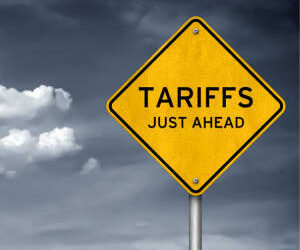Arif Husain
Head of International Fixed Income at T. Rowe Price
Portfolio Manager for the T. Rowe Price Dynamic Global Bond Fund
For bond investors with a global perspective and the flexibility to invest across all markets, opportunities can arise at unexpected times and in surprising places. It is, therefore, essential to be vigilant enough to spot these opportunities and agile enough to respond quickly.
The UK’s decision to leave the European Union (EU), for example, looks likely to have a significant impact on financial markets worldwide. This has been widely discussed in the media over the past few months, but so far, most of the focus has been on the UK’s future relationship with its major developed market country partners, such as Germany, France, the U.S., and Japan. Less attention has been given to how “Brexit” will affect Central and Eastern European (CEE) countries—yet the impact here, too, is potentially significant.
CEE direct exposure to the UK takes three main forms: money transfers home from CEE nationals living in the UK, exports from CEE countries to the UK, and the UK’s contribution to EU structural funds going into CEE countries. The effect of Brexit on remittances to CEE countries will be determined by any future trading agreement between the UK and EU, which will also cover the movement of labor. However, the impact here is likely to be small as these payments only compose a small portion of the gross domestic product (GDP) of CEE countries.
The impact on trade between the UK and CEE countries will also depend on the nature of the future trading arrangements between the UK and EU. But while overall trade levels may well be reduced, it is difficult to predict by how much until such arrangements are in place. The Czech Republic, whose exports to the UK account for 4.3% of GDP, stands to be the most affected, followed by Hungary (2.9%) and Poland (2.7%).1
Where we can be much more certain about Brexit’s impact is on EU structural funds to CEE countries. The UK is the third-largest net contributor to the EU, responsible for about 12% of the bloc’s overall budget. When the UK stops paying into the pot, the EU’s budget will fall from €135 billion to €117.5 billion, having a major impact on a number of CEE countries that rely heavily on EU funding for infrastructure projects. In Poland, for example, we estimate that EU funding will decline by almost 13%, from 3.5% of GDP currently to 3.1%. Other countries that will be heavily affected are Hungary (from 5.6% of GDP to 4.9%) and Lithuania (4.4% to 3.9%).
When these factors are added together with the effect of reduced supply chain exports to countries such as Germany, it becomes clear that the UK’s exit from the EU will have a significant impact on growth levels in Poland, Hungary, the Czech Republic, and Lithuania (see chart). Lower potential growth could lead to fiscal expansion, lower interest rates, and weaker currencies as the governments of these countries seek to rebalance their economies to offset the impact of export losses.
Source: T. Rowe Price
Figures shown are expressed as a percentage of GDP
The prospect of lower rates in certain CEE countries when the UK leaves the EU makes the local currency bonds of these countries potentially attractive investment opportunities. Lower future yields mean that existing bonds will pay comparatively higher rates, increasing their value. When appropriately currency hedged, local bonds in countries such as Poland, Hungary, Romania, and Serbia are likely to offer strong long-term return opportunities.
Identifying opportunities such as these requires extensive knowledge of global fixed income markets. At T. Rowe Price, we benefit from a global team of investors operating across markets and collaborating closely on investment ideas. This breadth enables us to manage funds such as our Dynamic Global Bond Fund with maximum flexibility in order to move quickly when we identify new investment themes. A bond strategy that is agile enough to do this should fulfill fixed income’s role as a diversifier and a provider of sustainable income and capital preservation.
Click here to learn more.
1Source: FactSet
Important Information: Equity Trustees Limited (“EQT”) (ABN 46 004 031 298/AFSL 240975) and T. Rowe Price International Ltd (“TRPIL”) (ABN 84 104 852 191) are, respectively, the responsible entity and investment manager of the T. Rowe Price Australian Unit Trusts. TRPIL is exempt from the requirement to hold an Australian financial services licence in respect of the financial services it provides in Australia and is regulated by the Financial Conduct Authority under UK laws, which differ from Australian laws. For Wholesale Clients only.
Past performance is not a reliable indicator of future performance. The price of any fund may go up or down. Investment involves risk including a possible loss to the principal amount invested. For further details, please refer to each fund’s product disclosure statement and reference guide which are available from EQT or TRPIL.
T. ROWE PRICE, INVEST WITH CONFIDENCE and the Bighorn Sheep design are, collectively and/or apart, trademarks or registered trademarks of T. Rowe Price Group, Inc. in the United States, European Union, and other countries. This material is intended for use only in select countries.
2016-GL-4784





